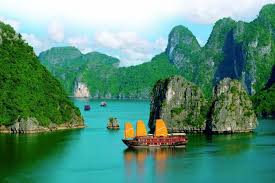
- 9 Nights / 10 Days
- 4 Star
- Air-conditioned vehicle
- Fast Pace
- Private Tour
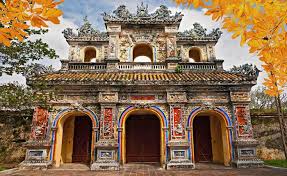
- 11 Nights / 12 Days
- 4 Star
- Air-conditioned vehicle
- Fast Pace
- Private Tour

- 13 Nights / 14 Days
- 4 Star/Boutique
- Air-conditioned vehicle
- Fast Pace
- Private Tour
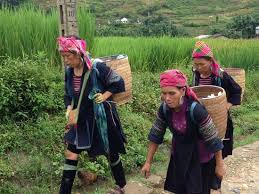
- 16 Nights / 17 Days
- 4 Star/Boutique
- Air-conditioned vehicle
- Fast Pace
- Private Tour
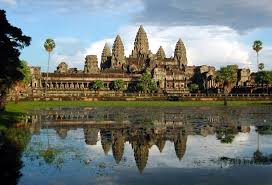
- 12 Nights / 13 Days
- 4 Star
- Air-conditioned vehicle
- Fast Pace
- Private Tour
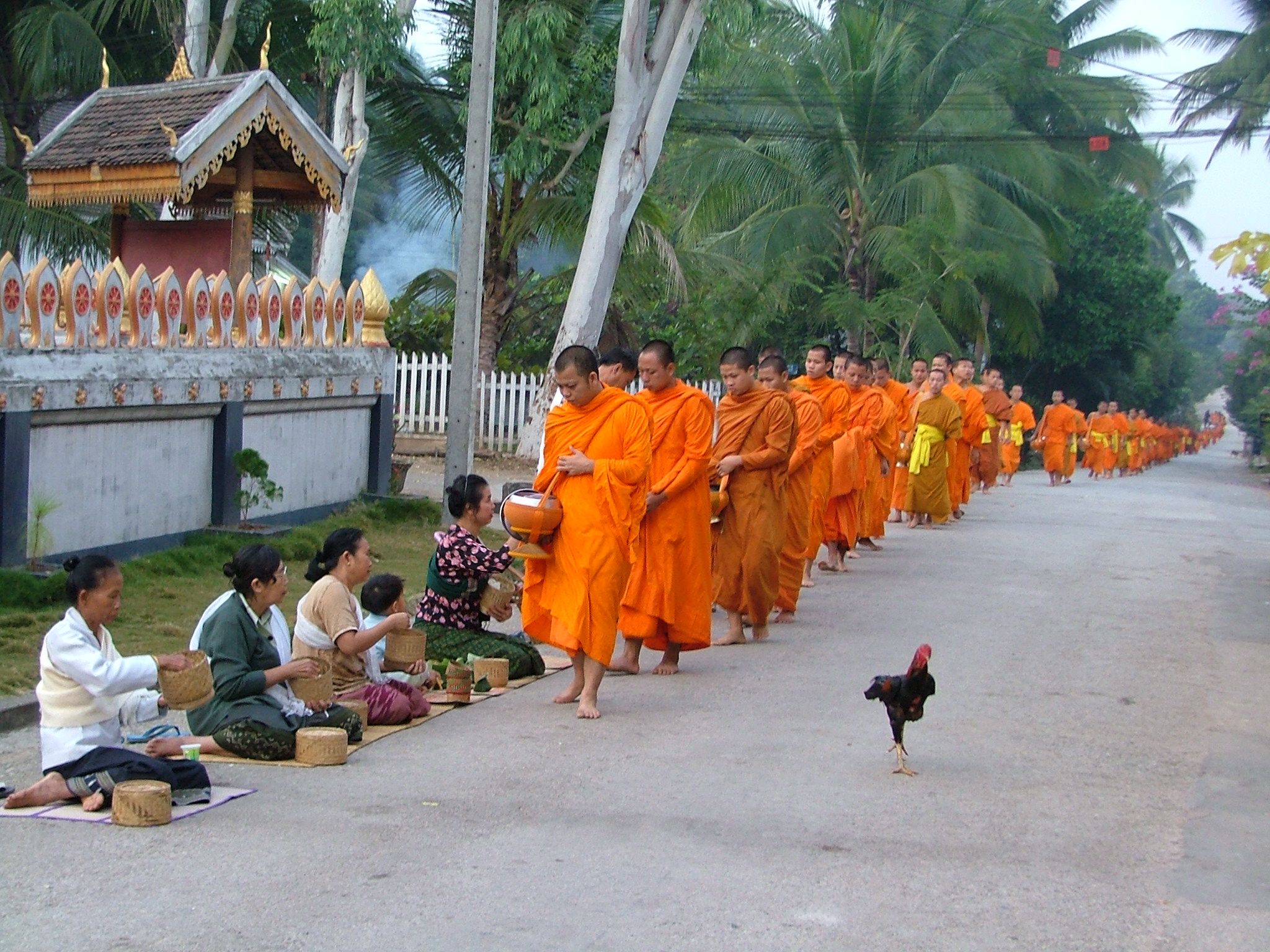
- 13 Nights / 14 Days
- 4 Star
- Air-conditioned vehicle
- Fast Pace
- Private Tour
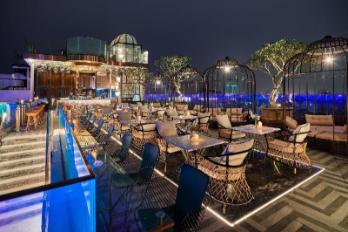
- 9 Nights / 10 Days
- 5 Star
- Air-conditioned vehicle
- Fast Pace
- Private Tour
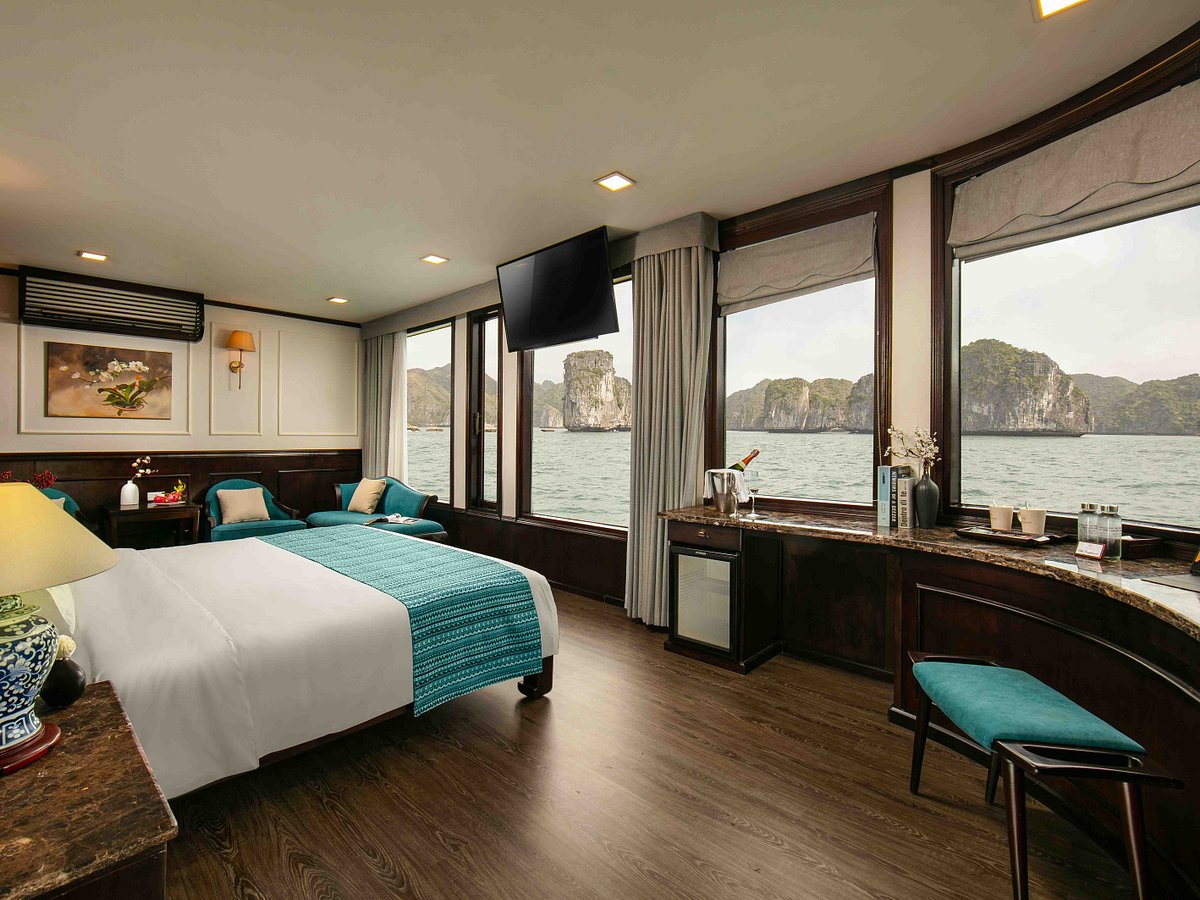
- 11 Nights / 12 Days
- 5 Star
- Air-conditioned vehicle
- Fast Pace
- Private Tour
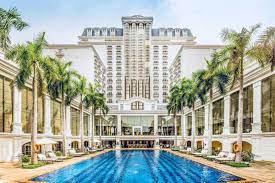
- 13 Nights / 14 Days
- 5 Star/4 Star
- Air-conditioned vehicle
- Fast Pace
- Private Tour
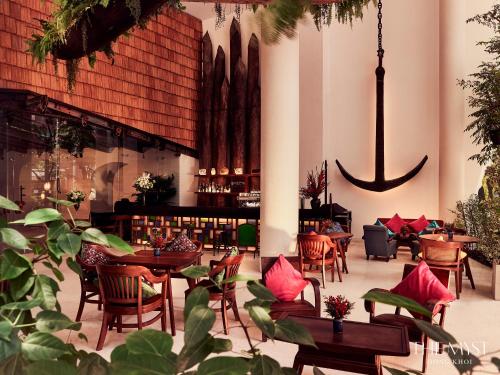
- 16 Nights / 17 Days
- 5 Star/4 Star
- Air-conditioned vehicle
- Fast Pace
- Private Tour
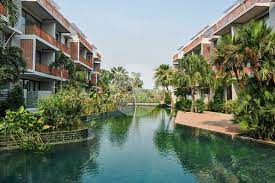
- 12 Nights / 13 Days
- 5 Star
- Air-conditioned vehicle
- Fast Pace
- Private Tour
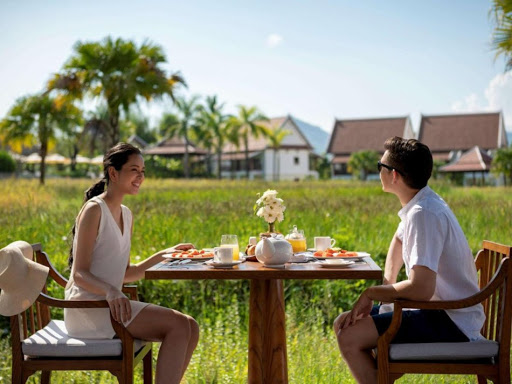
- 13 Nights / 14 Days
- 5 Star
- Air-conditioned vehicle
- Fast Pace
- Private Tour
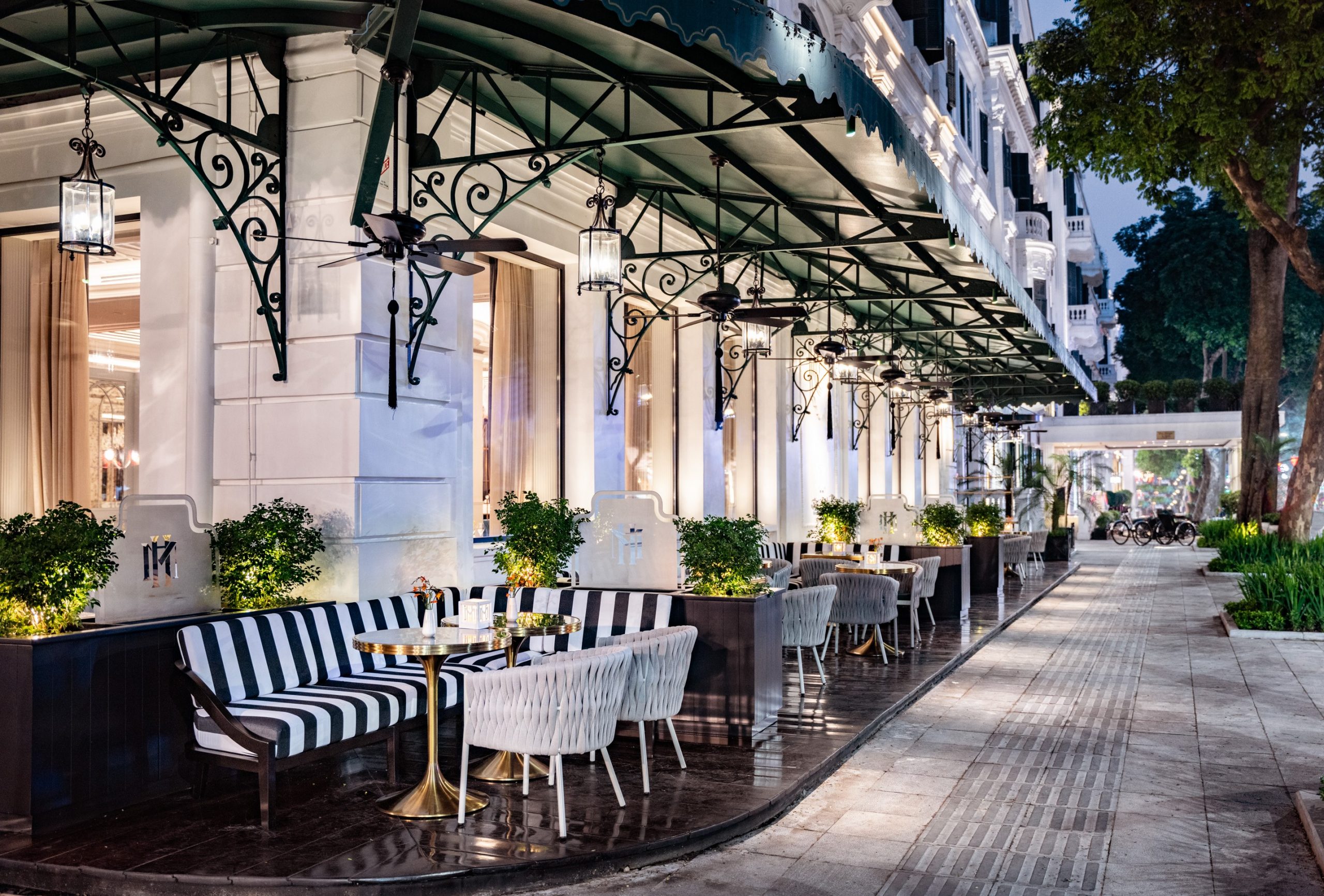
- 9 Nights / 10 Days
- 5 Star
- Air-conditioned vehicle
- Fast Pace
- Private Tour
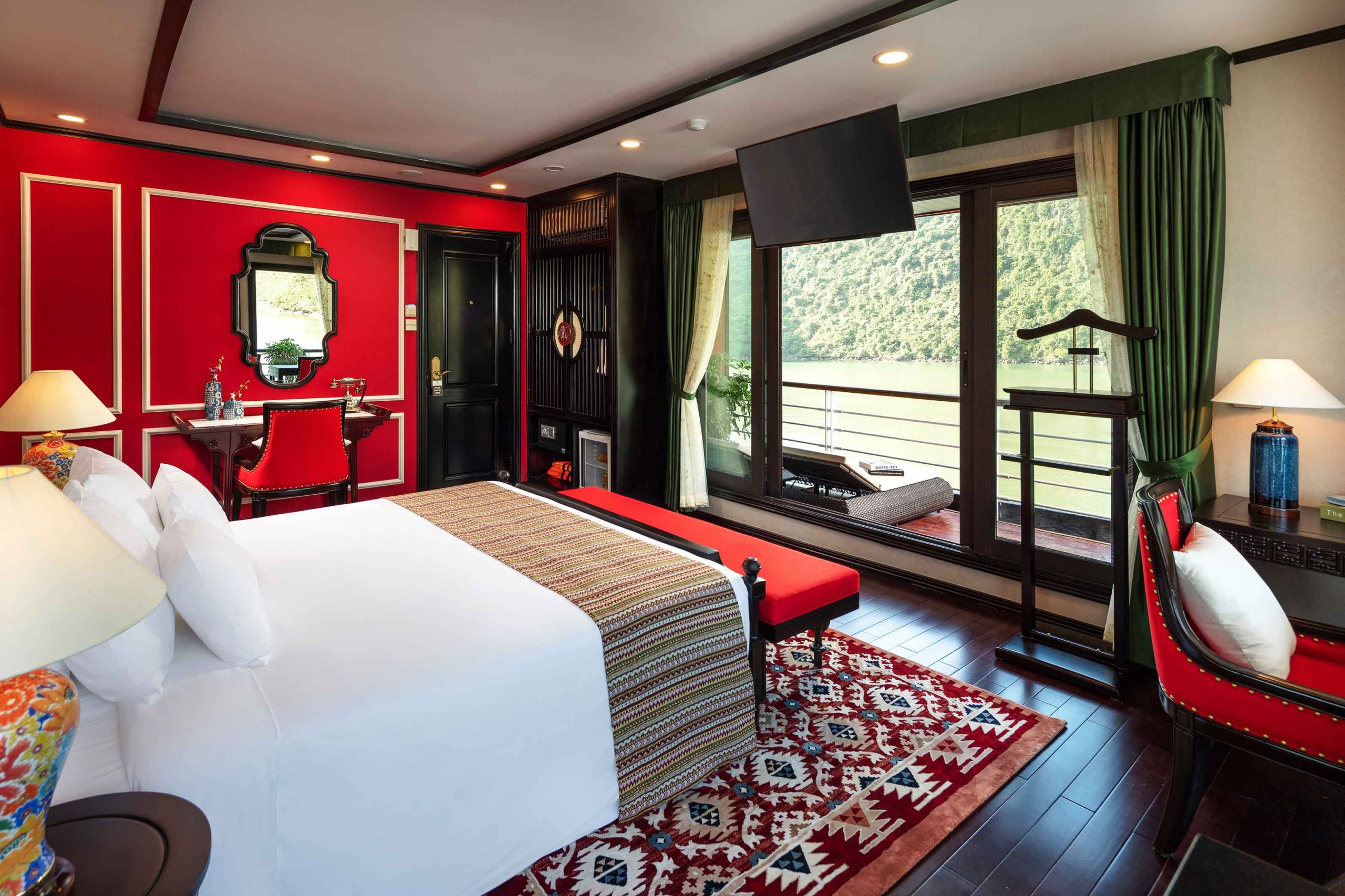
- 11 Nights / 12 Days
- 5 Star
- Air-conditioned vehicle
- Fast Pace
- Private Tour
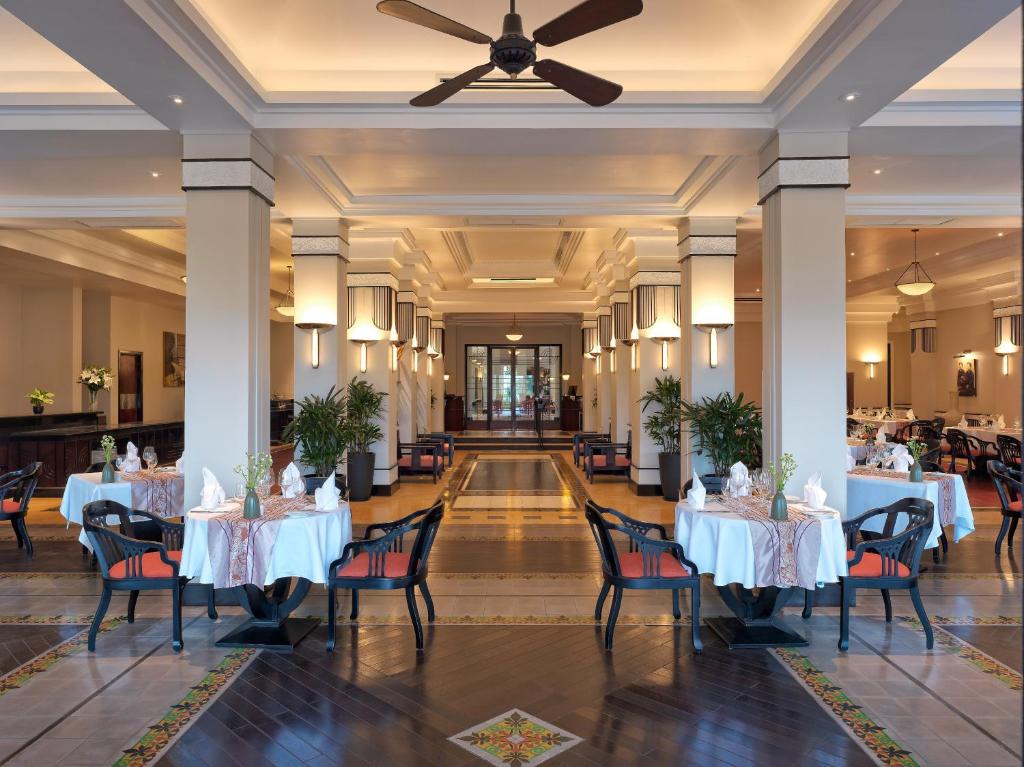
- 13 Nights / 14 Days
- 5 star
- Air-conditioned vehicle
- Fast Pace
- Private Tour
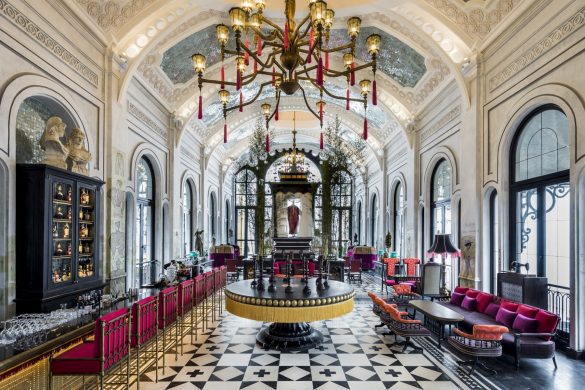
- 16 Nights / 17 Days
- 5 star
- Air-conditioned vehicle
- Fast Pace
- Private Tour
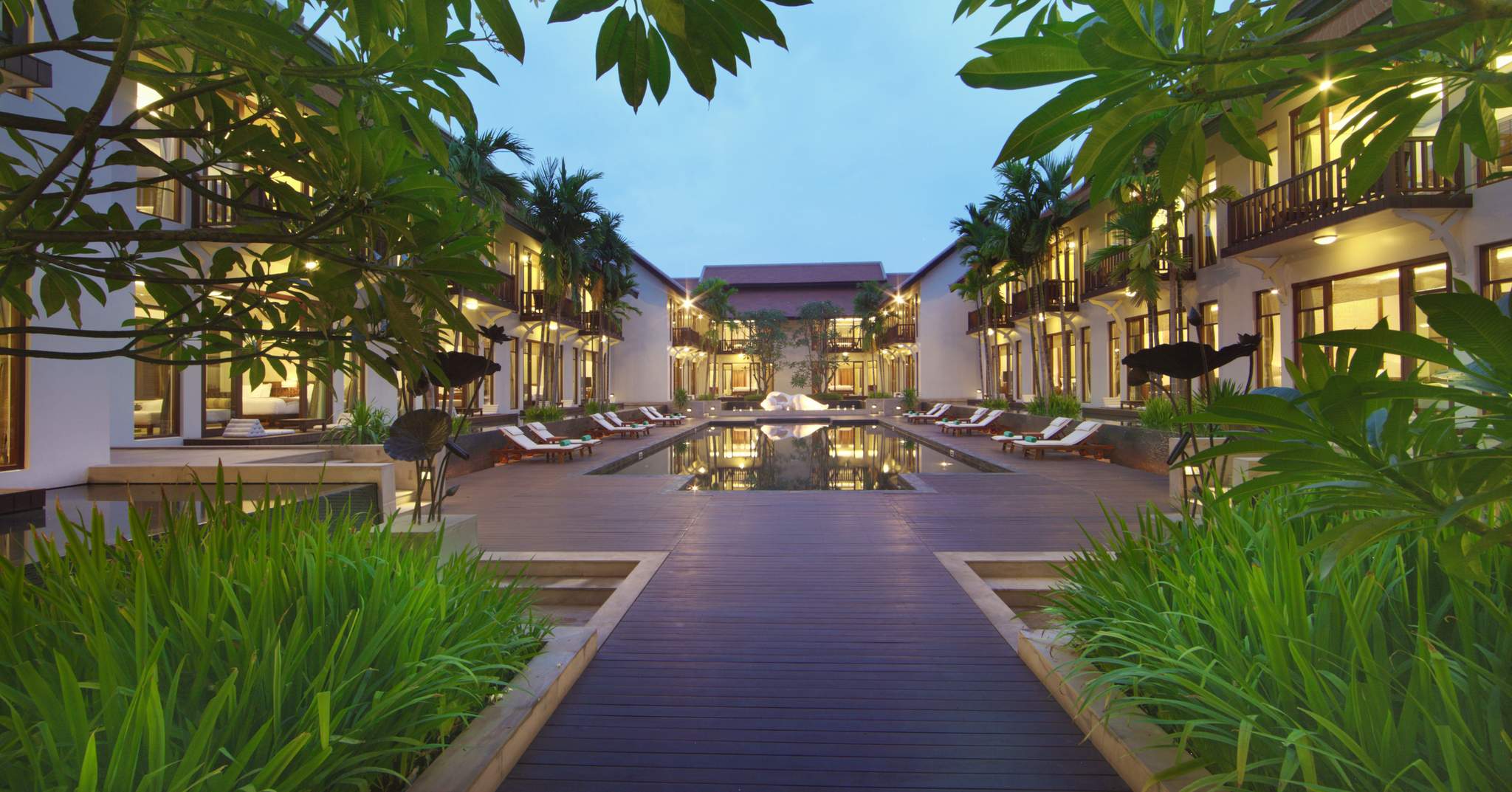
- 12 Nights / 13 Days
- 5 Star
- Air-conditioned vehicle
- Fast Pace
- Private Tour
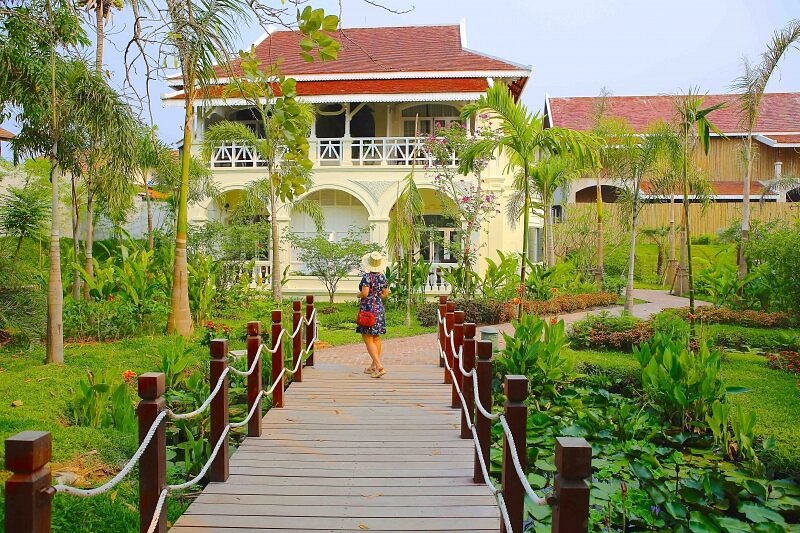
- 13 Nights / 14 Days
- 5 Star/Boutique
- Air-conditioned vehicle
- Fast Pace
- Private Tour
Vietnam is home to an abundance of beautiful landscapes, amazing historical monuments and cultural diversity.
Hanoi, the capital of Vietnam is filled with a fusion of traditional and European architecture and atmosphere. It offers numerous colonial buildings and museums and is a perfect place to explore on foot or on a cyclo. Hanoi is also known for its charming streets, the bustling local markets and the iconic herds of scooters.
Ho Chi Minh city, also called Saigon, is renowned for its French architecture, the skyscrapers and the temples that co-exist harmoniously side by side. It is also the hub for vibrant nightlife and mouth-watering cuisine.
Hoi An offer it’s visitors an experience of old school charm and captures a snapshot of Vietnam that has stood still in time for centuries. The trading port dating from the 15th century reflects a unique heritage style in its buildings and streets.
Holiday to Vietnam is not complete without experiencing the scenic and the UNESCO heritage listed Ha Long Bay. An overnight cruise is an ideal way to explore the serenity and beauty, as you take home wonderful memories.
If time permits, pay a visit to many other beautiful parts of Vietnam such as Sapa, Ninh Binh, Mai Chau, Hue and Mekong Delta. If you want to enjoy a beach stay, there are plenty of places to unwind along the vast coastal line. Da Nang, Nha Trang, Con Dao and Phu Quoc – just a few to consider.
When it comes to food, Vietnam is certainly a place to tantalise your taste buds. The cuisine is renowned for being diverse, healthy, and delicious. The French colonisation has also left its mark on many dishes including the banh mi and the coffee.
Whatever you wish to experience, this long “S” shaped country has it all covered. Visit this picturesque nation and awaken all of your senses.
NORTH WEST
-
Hmong Tribe (Sapa)
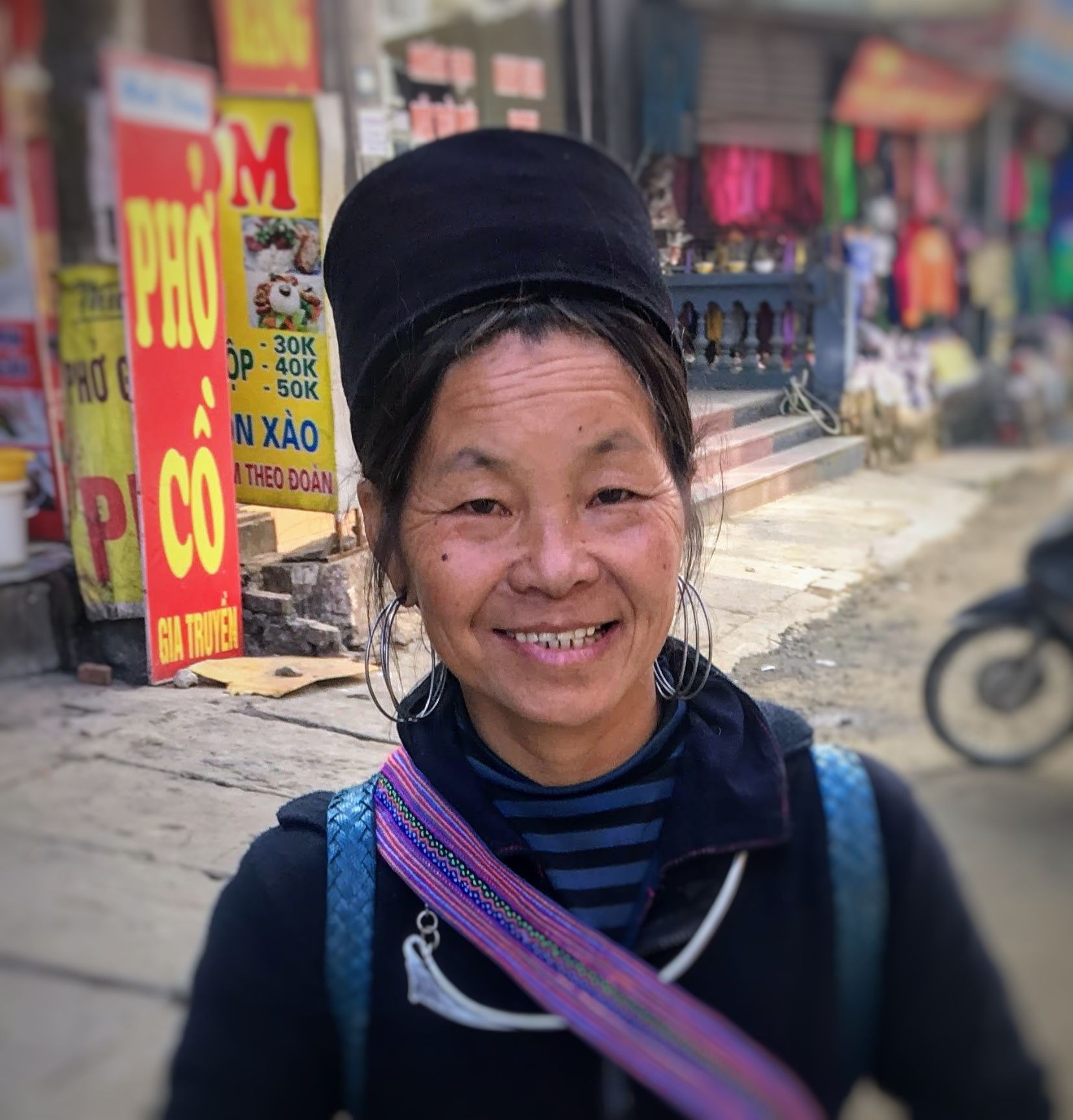 An ethnic group originally from South China, Hmong (Pronounced as mom) tribe can be found living in East and Southeast of Asia. It is believed they arrived in Vietnam some 300 years ago. Hmong tribe in Vietnam are known as the “Black Hmong”, predominantly due to their clothing and the bright colourful embroidery.
An ethnic group originally from South China, Hmong (Pronounced as mom) tribe can be found living in East and Southeast of Asia. It is believed they arrived in Vietnam some 300 years ago. Hmong tribe in Vietnam are known as the “Black Hmong”, predominantly due to their clothing and the bright colourful embroidery. -
Sapa Trek (Sapa)
 Immerse yourself within nature and watch the locals go about their daily lives. Witness the countryside and the majestic rice paddy fields. Though it may seem a bit commercialised in the town centre (due to the many sellers you will meet), Sapa is still an ideal way to experience the countryside of Vietnam. Trekking can be organised between one and three days to suit your requirements. Overnight treks will give you an authentic experience staying in a homestay style accommodation within their minority villages.
Immerse yourself within nature and watch the locals go about their daily lives. Witness the countryside and the majestic rice paddy fields. Though it may seem a bit commercialised in the town centre (due to the many sellers you will meet), Sapa is still an ideal way to experience the countryside of Vietnam. Trekking can be organised between one and three days to suit your requirements. Overnight treks will give you an authentic experience staying in a homestay style accommodation within their minority villages. -
Hilltribe Market (Bac Ha/Sapa)
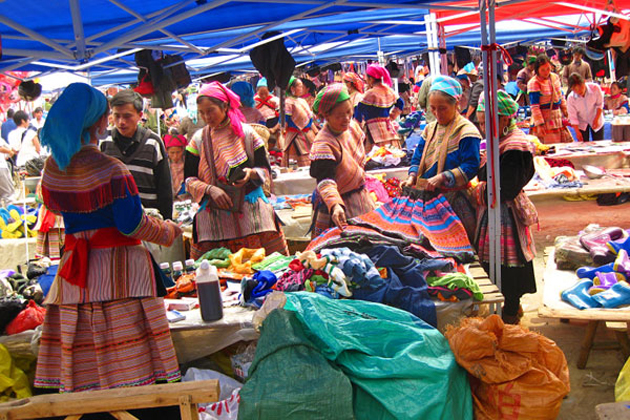 Home of the “Flower Hmong” people, Bac Ha is a rural district located about 76 km from Lao Cai City. It is famous for its Sunday morning market - known as Bac Ha Market. It is the largest and most colourful market in the area and attracts villagers from the surrounding hill tribes. A wide variety of items are up for sale and trade at the market including cattle, goats, horses as well as many traditional goods like hand-embroidered skirts, elaborated textiles, handbags, jewellery and trinkets made by the local ethnic people.
Home of the “Flower Hmong” people, Bac Ha is a rural district located about 76 km from Lao Cai City. It is famous for its Sunday morning market - known as Bac Ha Market. It is the largest and most colourful market in the area and attracts villagers from the surrounding hill tribes. A wide variety of items are up for sale and trade at the market including cattle, goats, horses as well as many traditional goods like hand-embroidered skirts, elaborated textiles, handbags, jewellery and trinkets made by the local ethnic people.
RED RIVER DELTA
-
Ho Chi Minh Complex (Hanoi)
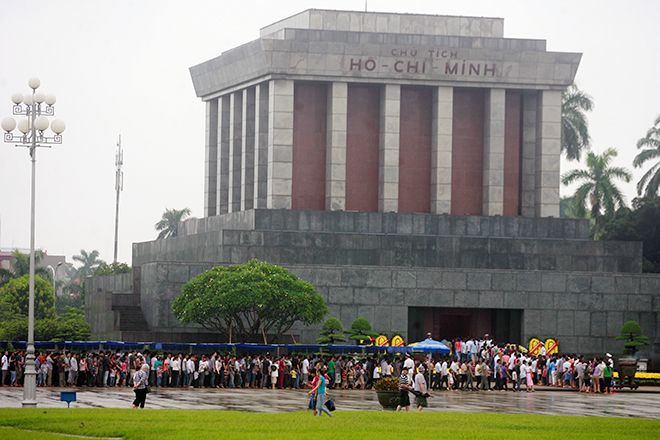 Ho Chi Minh (or called as Uncle Ho), was the very first president of Vietnam and also the hero that devoted his life to the national liberation of Vietnamese people. Ho Chi Minh complex is a tribute to the great leader by its government and people. The complex includes Ho Chi Minh’s Mausoleum, the Presidential Palace, Uncle Ho’s House on stilt, One Pillar pagoda, Ho Chi Minh museum and Ba Dinh square. This is a key attraction to visit during your trip to Hanoi.
Ho Chi Minh (or called as Uncle Ho), was the very first president of Vietnam and also the hero that devoted his life to the national liberation of Vietnamese people. Ho Chi Minh complex is a tribute to the great leader by its government and people. The complex includes Ho Chi Minh’s Mausoleum, the Presidential Palace, Uncle Ho’s House on stilt, One Pillar pagoda, Ho Chi Minh museum and Ba Dinh square. This is a key attraction to visit during your trip to Hanoi. -
Tran Quoc Pagoda (Hanoi)
 Dating back to the 6th century, this is the oldest Buddhist temple in Hanoi and is a sacred symbol of Buddhism in Vietnam. Situated on a small island on the West Lake Hanoi, it is a magnificent building with a tower that has 11 stories with the height of 15 meters. Each floor has 6 doorways and, in each box, there is a statue of Amitabha (the celestial Buddha), made from precious stone. The top of the tower is Cuu Pham Lien Hoa or lotus nine floors is predominantly made of gemstone. In 1959, when the Indian President Rajendra Prasad visited Vietnam, he gifted a Bodhi tree on the ground of Tran Quoc Pagoda. The Bodhi tree sits harmoniously between the ancient Pagoda and the tranquillity of the lake.
Dating back to the 6th century, this is the oldest Buddhist temple in Hanoi and is a sacred symbol of Buddhism in Vietnam. Situated on a small island on the West Lake Hanoi, it is a magnificent building with a tower that has 11 stories with the height of 15 meters. Each floor has 6 doorways and, in each box, there is a statue of Amitabha (the celestial Buddha), made from precious stone. The top of the tower is Cuu Pham Lien Hoa or lotus nine floors is predominantly made of gemstone. In 1959, when the Indian President Rajendra Prasad visited Vietnam, he gifted a Bodhi tree on the ground of Tran Quoc Pagoda. The Bodhi tree sits harmoniously between the ancient Pagoda and the tranquillity of the lake. -
Temple of Literature (Hanoi)
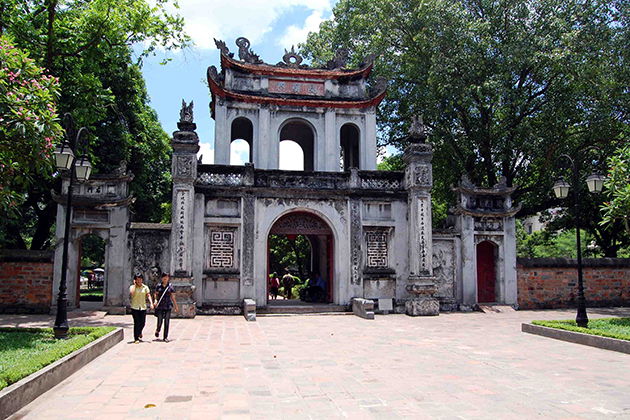 The Temple of Literature is an ancient landmark that was originally built in 1070 as a university dedicated to Confucius, sages and scholars. Hanoi Temple of Literature consists of two main monuments. First the temple of Confucius and Confucian sages. Second is the Imperial Academy - the first national university of Vietnam. The Temple of Literature has proudly trained thousands of talented Vietnamese and continues to be used as a setting for educational events such as award ceremonies and poetry festivals. It is also a peaceful oasis with picturesque gardens, traditional architecture and a tranquil lake, providing the perfect escape from the bustling city that lies beyond its historic walls.
The Temple of Literature is an ancient landmark that was originally built in 1070 as a university dedicated to Confucius, sages and scholars. Hanoi Temple of Literature consists of two main monuments. First the temple of Confucius and Confucian sages. Second is the Imperial Academy - the first national university of Vietnam. The Temple of Literature has proudly trained thousands of talented Vietnamese and continues to be used as a setting for educational events such as award ceremonies and poetry festivals. It is also a peaceful oasis with picturesque gardens, traditional architecture and a tranquil lake, providing the perfect escape from the bustling city that lies beyond its historic walls. -
Cyclo Tour (Hanoi)
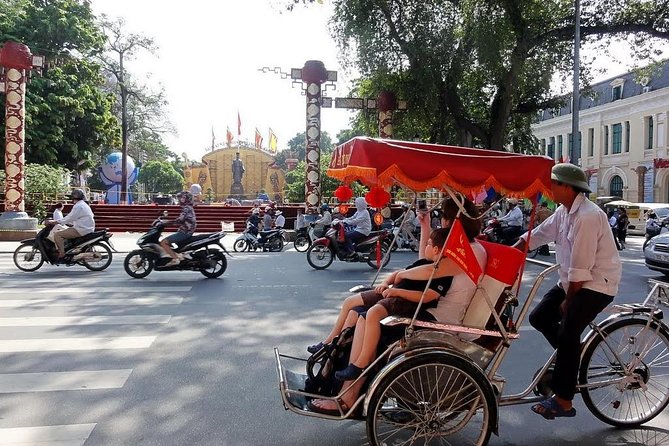 A cyclo tour is the perfect way to explore Hanoi and its streets through unobstructed views and photo moments. A cyclo is a “bicycle taxi” that is pedalled by a driver sitting behind you. Each street is conveniently named after the commodity produced and sold at that street such as sugar, bamboo, leather, silver etc. Enjoy the tree-shaded streets as your driver smartly manoeuvre and pass through the busy traffic. It will surely be an experience to remember.
A cyclo tour is the perfect way to explore Hanoi and its streets through unobstructed views and photo moments. A cyclo is a “bicycle taxi” that is pedalled by a driver sitting behind you. Each street is conveniently named after the commodity produced and sold at that street such as sugar, bamboo, leather, silver etc. Enjoy the tree-shaded streets as your driver smartly manoeuvre and pass through the busy traffic. It will surely be an experience to remember. -
Hoan Kiem Lake (Hanoi)
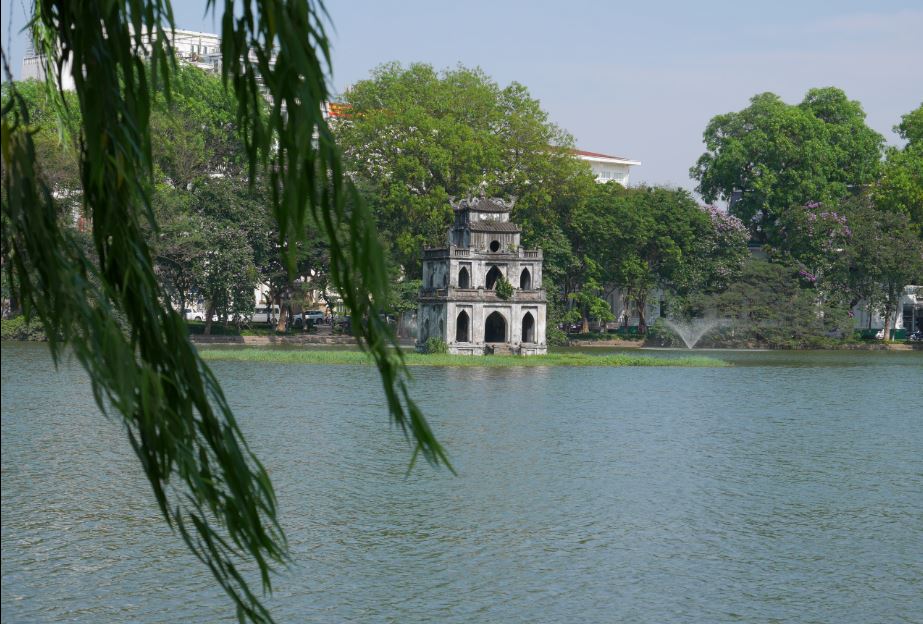 This is a peaceful and a quiet retreat enjoyed by many locals and travellers that need to escape the hustle and bustle of the city. It is a common sight to see the locals practising tai chi in the morning. It is also a great place to watch the evening sunsets. The lake surrounds Ngoc Son Temple, a pagoda sitting on a small island in the centre of the lake. The temple attracts many visitors and was built in commemoration of the 13th century military leader Tran Hung Dao, who was renowned for his bravery in the battle against the Yuan Dynasty. Turtle tower is also a significant landmark in the centre of Hoan Kiem lake. It used to be a resting place for the king while he went on fishing.
This is a peaceful and a quiet retreat enjoyed by many locals and travellers that need to escape the hustle and bustle of the city. It is a common sight to see the locals practising tai chi in the morning. It is also a great place to watch the evening sunsets. The lake surrounds Ngoc Son Temple, a pagoda sitting on a small island in the centre of the lake. The temple attracts many visitors and was built in commemoration of the 13th century military leader Tran Hung Dao, who was renowned for his bravery in the battle against the Yuan Dynasty. Turtle tower is also a significant landmark in the centre of Hoan Kiem lake. It used to be a resting place for the king while he went on fishing. -
Water Puppet Show (Hanoi)
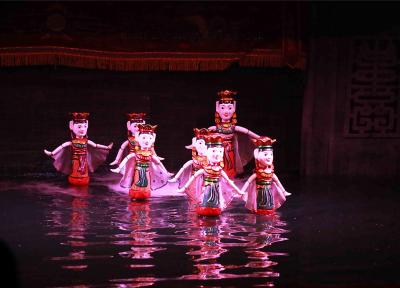 Water puppetry is a unique and rustic traditional art of Vietnam, dating back to the 11th century. It is now a popular show entertaining many locals and travellers. The tradition of the water puppets emerged from the underwater rice fields on the Red River Delta (Northern Vietnam), where puppeteers entertained their audience by building stages around the flooded rice fields. Locals also believed that the water puppet shows protected their precious crops from spirits.
Water puppetry is a unique and rustic traditional art of Vietnam, dating back to the 11th century. It is now a popular show entertaining many locals and travellers. The tradition of the water puppets emerged from the underwater rice fields on the Red River Delta (Northern Vietnam), where puppeteers entertained their audience by building stages around the flooded rice fields. Locals also believed that the water puppet shows protected their precious crops from spirits. -
Lan Ha Bay (Ha Long Bay Area)
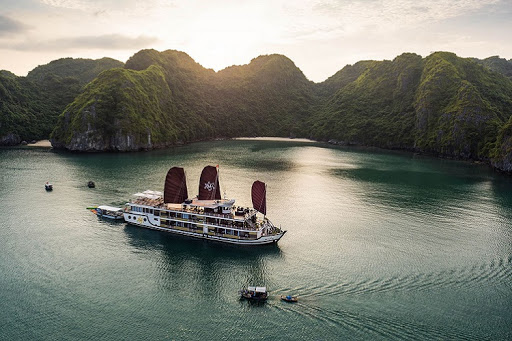 Similar in scenery and beauty, Lan Ha Bay is an ideal alternate to the much busier Halong Bay. Lan Ha Bay consists of around 400 limestone islands whereas Halong Bay is larger with around 1600 islands. During your visit to Lan Ha Bay, most cruises will also have a stopover at Cab Ba Island (the largest island) spanning around 260sqkm.
Similar in scenery and beauty, Lan Ha Bay is an ideal alternate to the much busier Halong Bay. Lan Ha Bay consists of around 400 limestone islands whereas Halong Bay is larger with around 1600 islands. During your visit to Lan Ha Bay, most cruises will also have a stopover at Cab Ba Island (the largest island) spanning around 260sqkm. -
Dinh and Le Temples (Ninh Binh)
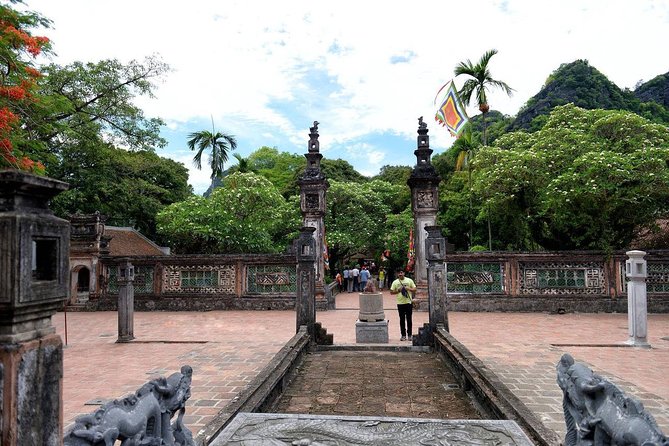 Built in the 17th century, these temples honour the Dinh and Le imperial dynasties. The Dinh Temple honours King Dinh Tien Hoang and Le Temple honours King Le Dai Hanh. Dinh temple consists of three parts: Bai Duong for the community, Thien Huong in honour of mandarins and Chinh Cung where Dinh Tien Hoang’s statue is located. On the left side of the statue is his eldest son Dinh Lien, and on his right are those of Dinh Hang Lang and Dinh Toan. Le Temple is very similar to Dinh Temple in term of architectural design and also consists of three parts: Bai Duong used for the community, Thien Huong, in memory of the royal mandarins of King Le and the altar in memory of the King.
Built in the 17th century, these temples honour the Dinh and Le imperial dynasties. The Dinh Temple honours King Dinh Tien Hoang and Le Temple honours King Le Dai Hanh. Dinh temple consists of three parts: Bai Duong for the community, Thien Huong in honour of mandarins and Chinh Cung where Dinh Tien Hoang’s statue is located. On the left side of the statue is his eldest son Dinh Lien, and on his right are those of Dinh Hang Lang and Dinh Toan. Le Temple is very similar to Dinh Temple in term of architectural design and also consists of three parts: Bai Duong used for the community, Thien Huong, in memory of the royal mandarins of King Le and the altar in memory of the King. -
Tam Coc (Ninh Binh)
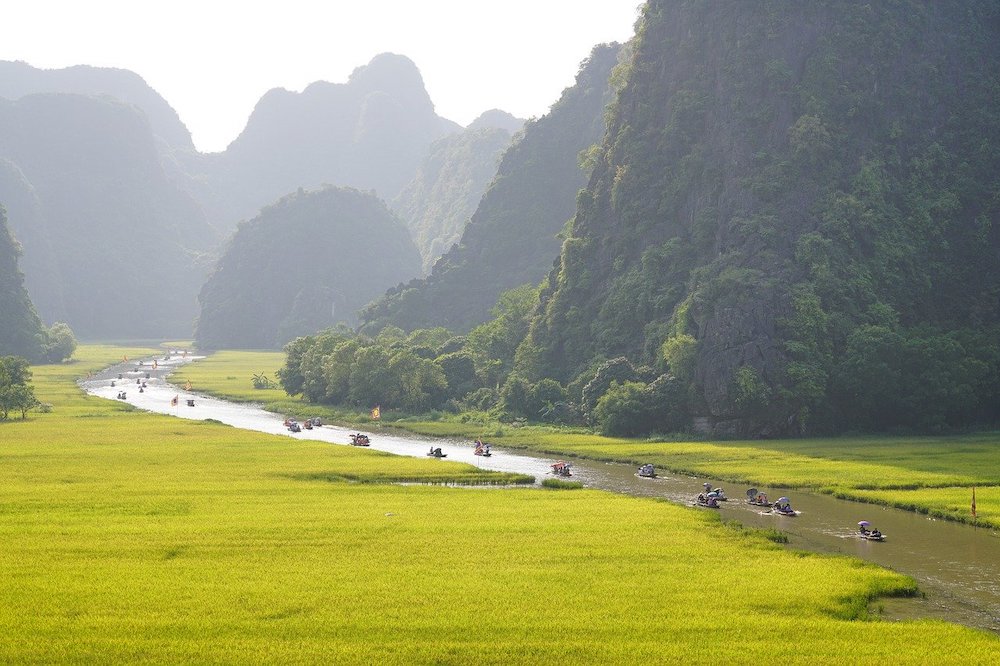 Tam Coc, which translates to “3 caves” is located 7km to the West of Ninh Binh. A picturesque side of Vietnam that elapses between rice paddy fields, Ngo Dong River, karstic rock formations and limestone caves. Tam Coc is also be known as the “Halong Bay on land” due its surroundings and nature. You can experience Tam Coc by taking a relaxing boat ride.
Tam Coc, which translates to “3 caves” is located 7km to the West of Ninh Binh. A picturesque side of Vietnam that elapses between rice paddy fields, Ngo Dong River, karstic rock formations and limestone caves. Tam Coc is also be known as the “Halong Bay on land” due its surroundings and nature. You can experience Tam Coc by taking a relaxing boat ride. -
Bich Dong Pagoda (Ninh Binh)
 Located approximately 2km from Tam Coc wharf, Bich Dong Pagoda can be found at the foothills of limestone mountains. Bich Dong translates to “Emerald Green Grotto”. It earned this name during the ancient times as it was surrounded by green trees and tranquil scenery. Bich Dong Pagoda was first built in 1428 under the reign of Ly Thai To on the Truong Yen limestone mountains range, Hoa Lu District. It is a typical reflection of traditional construction style, made from wood and stone with brick tiled roofs. However, its true uniqueness comes from the three separate layered pagoda structures: Ha Pagoda (Lower Pagoda), Trung Pagoda (Middle Pagoda) and Thuong Pagoda (Upper Pagoda). These 3 pagodas are built in ascending order and can be reached by climbing steep stairs.
Located approximately 2km from Tam Coc wharf, Bich Dong Pagoda can be found at the foothills of limestone mountains. Bich Dong translates to “Emerald Green Grotto”. It earned this name during the ancient times as it was surrounded by green trees and tranquil scenery. Bich Dong Pagoda was first built in 1428 under the reign of Ly Thai To on the Truong Yen limestone mountains range, Hoa Lu District. It is a typical reflection of traditional construction style, made from wood and stone with brick tiled roofs. However, its true uniqueness comes from the three separate layered pagoda structures: Ha Pagoda (Lower Pagoda), Trung Pagoda (Middle Pagoda) and Thuong Pagoda (Upper Pagoda). These 3 pagodas are built in ascending order and can be reached by climbing steep stairs. -
Van Long (Ninh Binh)
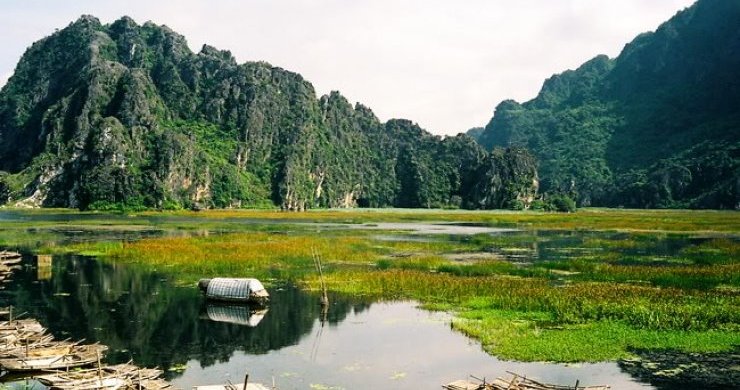 Set amid glorious limestone pinnacles, Van Long draws many keen birdwatchers to its shores. It is a tranquil reserve with a narrow wetland, that is home to bird species such as the rare black-faced spoonbill, cotton pygmy goose and white-browed crake. Van Long is also one of the last refuges of the endangered Delacour’s langur. Langurs are very rare and not easy to spot. Best times to try your luck is during early morning or in the evening.
Set amid glorious limestone pinnacles, Van Long draws many keen birdwatchers to its shores. It is a tranquil reserve with a narrow wetland, that is home to bird species such as the rare black-faced spoonbill, cotton pygmy goose and white-browed crake. Van Long is also one of the last refuges of the endangered Delacour’s langur. Langurs are very rare and not easy to spot. Best times to try your luck is during early morning or in the evening. -
Cuc Phuong National Park (Ninh Binh Area)
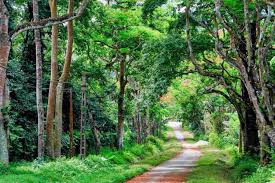 The first national park and also the largest nature reserve of Vietnam. Cuc Phuong National park is located about 45km away from Ninh Binh. It spans nearly 22,000 hectares and borders the provinces Ninh Binh, Hoa Binh, and Thanh Hoa. Best way to enjoy the park is by trekking or cycling. Home to nearly 100 mammal species, 300 bird species and other animals, it is a paradise for the nature lovers. Best time to visit is during the dry season between the months of December and April.
The first national park and also the largest nature reserve of Vietnam. Cuc Phuong National park is located about 45km away from Ninh Binh. It spans nearly 22,000 hectares and borders the provinces Ninh Binh, Hoa Binh, and Thanh Hoa. Best way to enjoy the park is by trekking or cycling. Home to nearly 100 mammal species, 300 bird species and other animals, it is a paradise for the nature lovers. Best time to visit is during the dry season between the months of December and April.
NORTH CENTRAL COAST
-
Imperial Citadel (Hue)
 Located beside the Perfume River, the Hue Imperial Citadel is one of the most famous heritage sites in Central Vietnam. The Hue Citadel was officially classified as a World Heritage Site by UNESCO in 2010, during Hanoi’s 1000th birthday. As Hue was the former national capital of Vietnam, Hue Citadel was an important site for the Nguyen Dynasty, where the kings, queens, mandarins and different royal officials resided within the large fortress. The construction of the Hue Citadel was initiated by the first King of Nguyen Dynasty Gia Long in 1805, however it was not completed until 1833 under the reign of King Minh Mang. This city is a marvellous reflection of Vietnamese culture and used to be the educational, cultural and political centre of Vietnam under the Nguyen Dynasty.
Located beside the Perfume River, the Hue Imperial Citadel is one of the most famous heritage sites in Central Vietnam. The Hue Citadel was officially classified as a World Heritage Site by UNESCO in 2010, during Hanoi’s 1000th birthday. As Hue was the former national capital of Vietnam, Hue Citadel was an important site for the Nguyen Dynasty, where the kings, queens, mandarins and different royal officials resided within the large fortress. The construction of the Hue Citadel was initiated by the first King of Nguyen Dynasty Gia Long in 1805, however it was not completed until 1833 under the reign of King Minh Mang. This city is a marvellous reflection of Vietnamese culture and used to be the educational, cultural and political centre of Vietnam under the Nguyen Dynasty. -
Minh Mang Tomb (Hue)
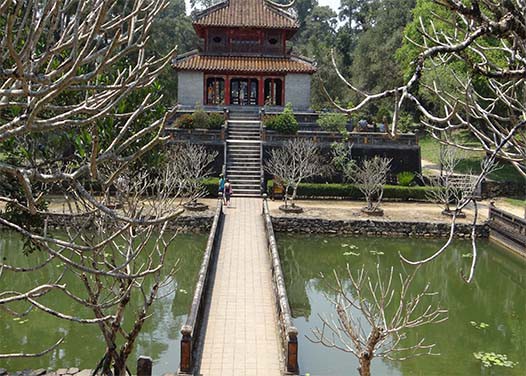 Minh Mang tomb is a resting place of the second King of the Nguyen Dynasty - Minh Mang who ruled from 1820 to 1840. He was the son of Emperor Gia Long. King Minh Mang died in 1841 and his tomb is located on the west bank of the Perfume River. Minh Mang tomb is classed as one of the most exquisite of all Nguyen Dynasty royal tombs, as the architecture harmoniously compliments the natural beauty of the surrounding landscape.
Minh Mang tomb is a resting place of the second King of the Nguyen Dynasty - Minh Mang who ruled from 1820 to 1840. He was the son of Emperor Gia Long. King Minh Mang died in 1841 and his tomb is located on the west bank of the Perfume River. Minh Mang tomb is classed as one of the most exquisite of all Nguyen Dynasty royal tombs, as the architecture harmoniously compliments the natural beauty of the surrounding landscape. -
Khai Dinh Tomb (Hue)
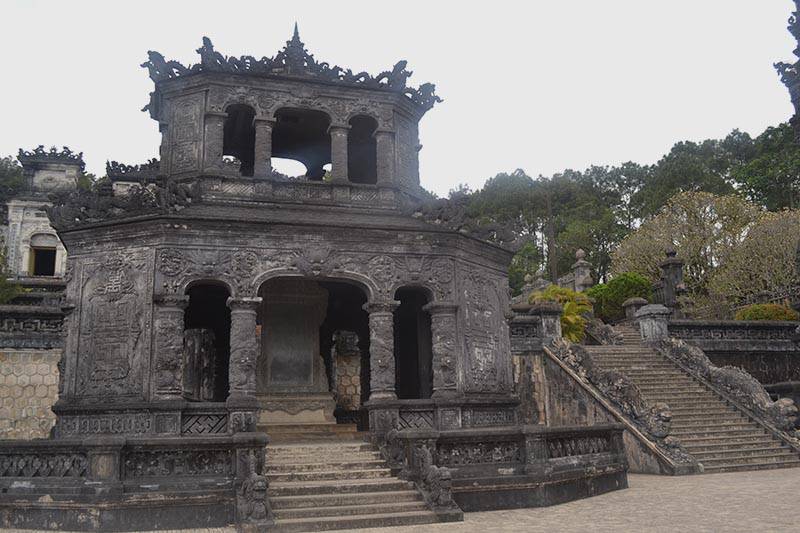 Khải Định was the 12th Emperor of the Nguyễn Dynasty in Vietnam, reigning from 1916 to 1925. Emperor Khai Dinh chose the slope of Chau Chu (Chau E) Mountain to construct his Tomb in 1920. His unique tomb is a remarkable reflection of both Vietnamese and European architecture. Outside of the tomb is covered by blackened concrete however, the interior design is much more colourful and majestic with a myriad number of mosaics.
Khải Định was the 12th Emperor of the Nguyễn Dynasty in Vietnam, reigning from 1916 to 1925. Emperor Khai Dinh chose the slope of Chau Chu (Chau E) Mountain to construct his Tomb in 1920. His unique tomb is a remarkable reflection of both Vietnamese and European architecture. Outside of the tomb is covered by blackened concrete however, the interior design is much more colourful and majestic with a myriad number of mosaics. -
Perfume River and Cruise (Hue)
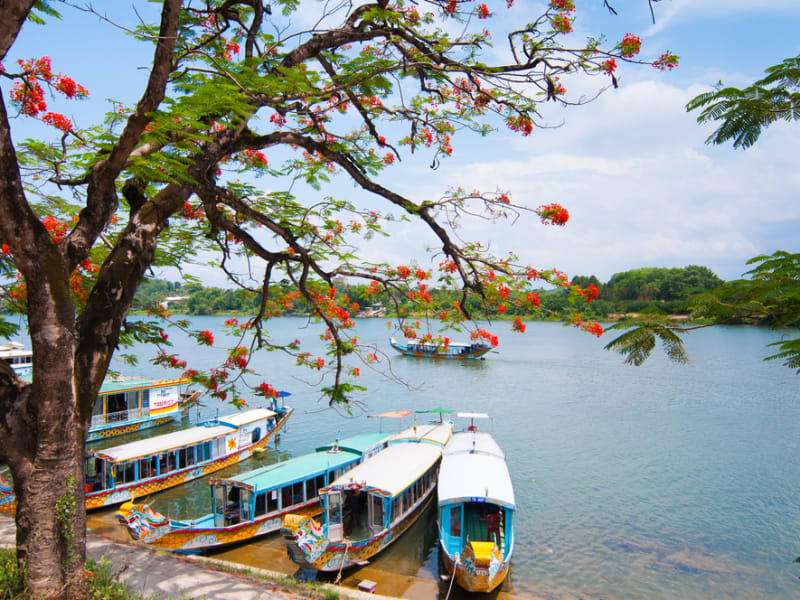 Perfume River’s natural beauty enhances the unique characteristics of the ancient capital of Hue. It flows through the Hue Imperial City, Imperial Citadel and Forbidden City that spans up to 80km. Perfume River inherited its name from the aromatic scent of the orchards that fell into the river. This iconic river separates the city into two parts, the Northern and the Southern. Popular dragon boat ride is a great way to marvel at the scenic landscape and the river banks dotted with historical monuments.
Perfume River’s natural beauty enhances the unique characteristics of the ancient capital of Hue. It flows through the Hue Imperial City, Imperial Citadel and Forbidden City that spans up to 80km. Perfume River inherited its name from the aromatic scent of the orchards that fell into the river. This iconic river separates the city into two parts, the Northern and the Southern. Popular dragon boat ride is a great way to marvel at the scenic landscape and the river banks dotted with historical monuments. -
Thien Mu Pagoda (Hue)
 Thien Mu Pagoda, also known as - "Heavenly Lady Pagoda" is located in Hue and was built in 1601 by Lord Nguyen Hoang. It charmingly is situated up on Ha Khe hill, between Perfume River and a pine forest. The two main sections of the pagoda include the seven level Phuoc Duyen Tower and the main hall where Buddha is enshrined. Monks of the temple also live and practice Buddhism here. The pagoda’s name “Heavenly Lady Pagoda” was based on a legend. It was believed by the local people that an old lady appeared on Ha Khe hill and prophesied that a great leader would build a pagoda on the site to bring prosperity to the country. The legend was realised and brought to reality by Lord Nguyen Hoang.
Thien Mu Pagoda, also known as - "Heavenly Lady Pagoda" is located in Hue and was built in 1601 by Lord Nguyen Hoang. It charmingly is situated up on Ha Khe hill, between Perfume River and a pine forest. The two main sections of the pagoda include the seven level Phuoc Duyen Tower and the main hall where Buddha is enshrined. Monks of the temple also live and practice Buddhism here. The pagoda’s name “Heavenly Lady Pagoda” was based on a legend. It was believed by the local people that an old lady appeared on Ha Khe hill and prophesied that a great leader would build a pagoda on the site to bring prosperity to the country. The legend was realised and brought to reality by Lord Nguyen Hoang. -
Garden Houses
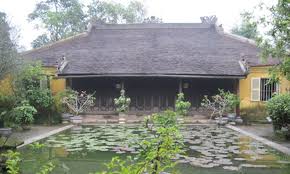 A unique feature in Hue are the garden houses located by the banks of the Perfume River. These houses were built over 200 years ago during the Nguyen dynasty to accommodate relatives of the emperors, Confucian scholars and the country’s nobility. The ownership of these houses has been passed down the generations and these houses are individually maintained by the proud descendants of the original owners today. They were built according to the principles of geomancy and pretty much reflect the same principles of architecture and geometry. Some of these houses are now converted into boutique hotels and restaurants allowing you to experience the charm and character of the ancient past.
A unique feature in Hue are the garden houses located by the banks of the Perfume River. These houses were built over 200 years ago during the Nguyen dynasty to accommodate relatives of the emperors, Confucian scholars and the country’s nobility. The ownership of these houses has been passed down the generations and these houses are individually maintained by the proud descendants of the original owners today. They were built according to the principles of geomancy and pretty much reflect the same principles of architecture and geometry. Some of these houses are now converted into boutique hotels and restaurants allowing you to experience the charm and character of the ancient past.
SOUTH CENTRAL COAST
-
Japanese Bridge (Hoi An)
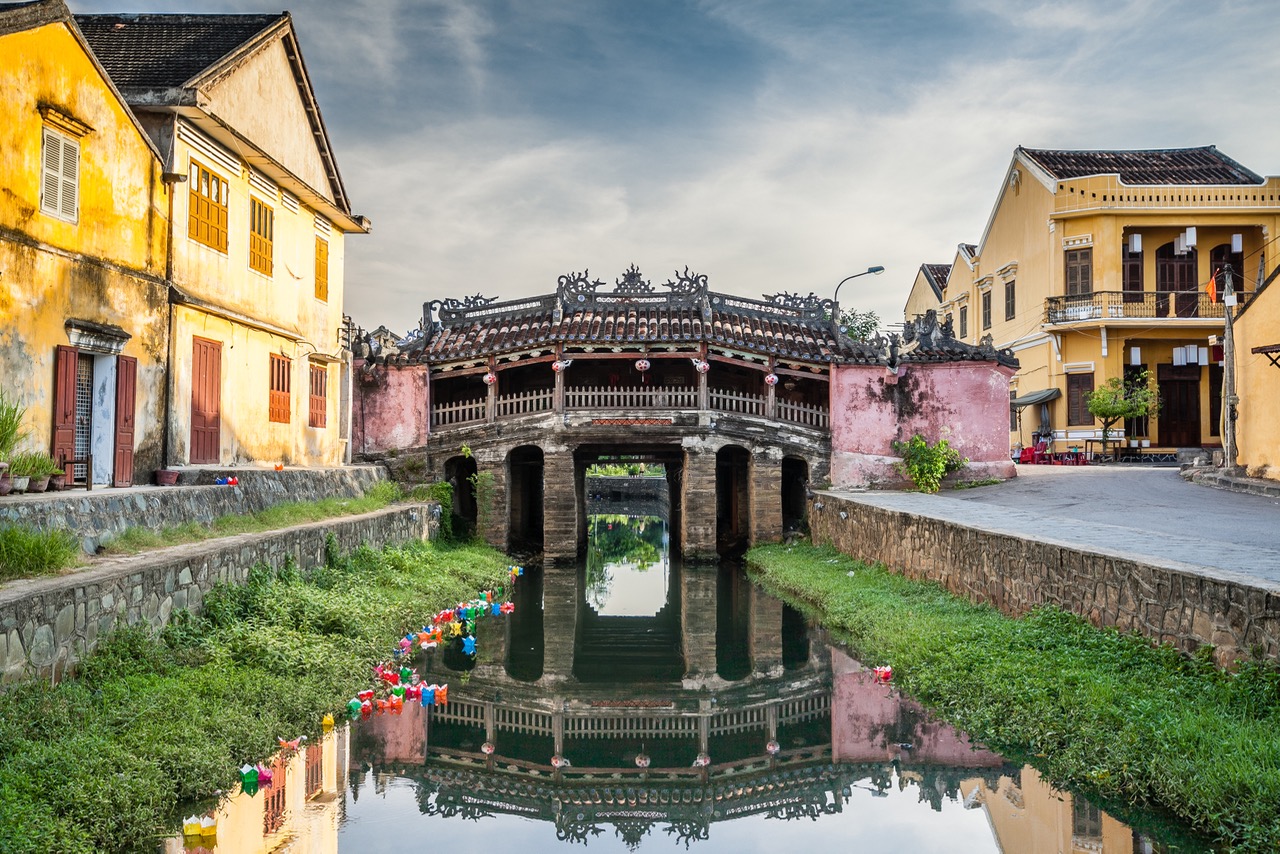 True to its name, the Japanese bridge was constructed by the Japanese trading community in 1593 for commercial trading with the Chinese area on the other side of a small stream. The bridge connects the two major streets of Hoi An Old Quarter - Nguyen Thi Minh Khai and Tran Phu Street, overlooking the peaceful Thu Bon River. It is also known as Chua Cau (Bridge Pagoda). Upon entering the bridge, you will see a pagoda, resembling a temple on the north of the bridge.
True to its name, the Japanese bridge was constructed by the Japanese trading community in 1593 for commercial trading with the Chinese area on the other side of a small stream. The bridge connects the two major streets of Hoi An Old Quarter - Nguyen Thi Minh Khai and Tran Phu Street, overlooking the peaceful Thu Bon River. It is also known as Chua Cau (Bridge Pagoda). Upon entering the bridge, you will see a pagoda, resembling a temple on the north of the bridge. -
Reaching Out Tea House (Hoi An)
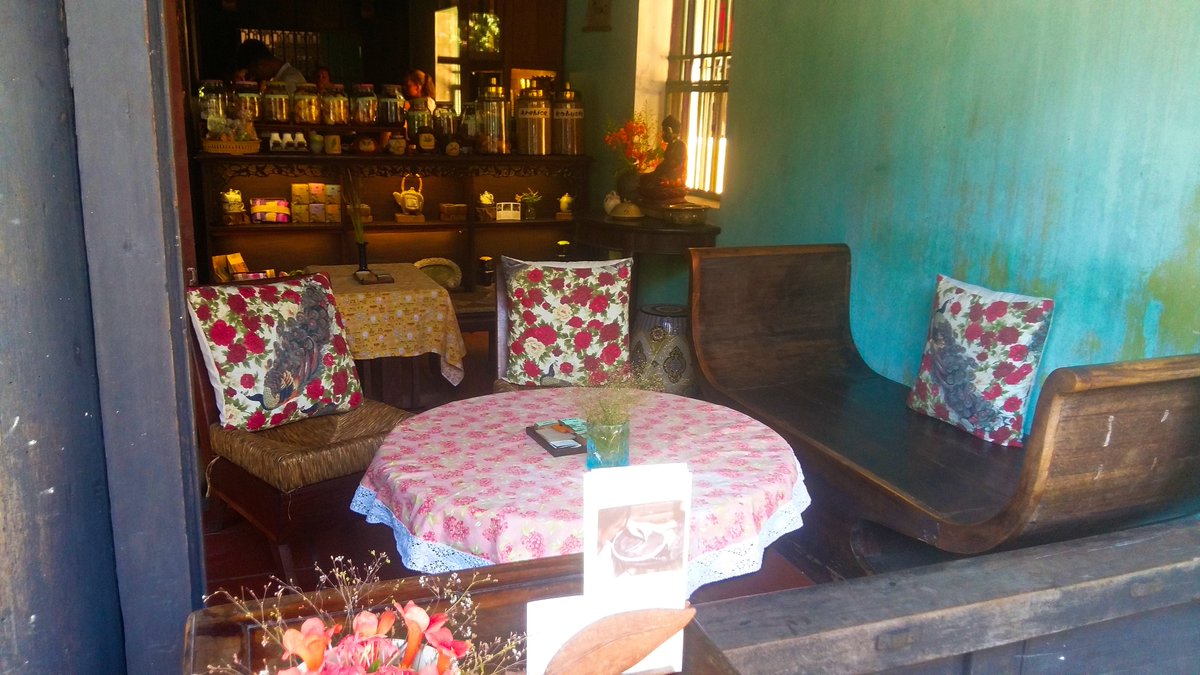 The Reaching Out Tea House in Hoi An is a wonderful social initiative that supports the local speech and hearing-impaired community. They serve traditional and locally made tea, coffee and biscuits. The Tea House is located within an ancient traditional Vietnamese house, which enhances the unique experience. The gracious hospitality, magnificent outdoor area and a private play area for young children allows one to peacefully sip on a cup of tea or coffee.
The Reaching Out Tea House in Hoi An is a wonderful social initiative that supports the local speech and hearing-impaired community. They serve traditional and locally made tea, coffee and biscuits. The Tea House is located within an ancient traditional Vietnamese house, which enhances the unique experience. The gracious hospitality, magnificent outdoor area and a private play area for young children allows one to peacefully sip on a cup of tea or coffee. -
Tra Que Village by Bicycle (Hoi An)
 Tra Que is a charming small village located just a few kilometers from Hoi An. The village is named after the sweet-scented vegetables Hoi Anese grow in the village, which are used to spice up famous Hoi Anese delicacies. A great way to explore the village is through a tour on bicycles. Ride through the atmospheric Tra Que Vegetable Village and roll up your sleeves to try the local farming activities. Learn the process of planting vegetables, including raking the ground, sowing, watering and picking vegetables. After the farm trip, you will also participate in a brief cooking demonstration about savory pancakes. This Vietnamese savory pancake is popular treat and favoured by locals throughout Vietnam.
Tra Que is a charming small village located just a few kilometers from Hoi An. The village is named after the sweet-scented vegetables Hoi Anese grow in the village, which are used to spice up famous Hoi Anese delicacies. A great way to explore the village is through a tour on bicycles. Ride through the atmospheric Tra Que Vegetable Village and roll up your sleeves to try the local farming activities. Learn the process of planting vegetables, including raking the ground, sowing, watering and picking vegetables. After the farm trip, you will also participate in a brief cooking demonstration about savory pancakes. This Vietnamese savory pancake is popular treat and favoured by locals throughout Vietnam.
SOUTH EAST & MEKONG RIVER DELTA
-
War Remnants Museum (Ho Chi Minh City)
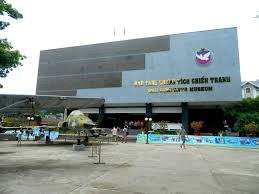 The War Remnants Museum is a historical recollection of the Vietnam War. The main exhibits are associated with the American phase of the Vietnam War from 1961 to 1975. The museum also contains firsthand account of Japanese war photographer Bunyo Ishikawa, who documented the Vietnam War through an incredible selection of photographs. Over 250 photographs detail the conflict as experienced by both soldiers and civilians. Some of the exhibits at the museum can be confronting as it depicts the effects of Agent Orange and Napalm bombs on the Vietnamese people, with some of the exhibition content unsuitable for children.
The War Remnants Museum is a historical recollection of the Vietnam War. The main exhibits are associated with the American phase of the Vietnam War from 1961 to 1975. The museum also contains firsthand account of Japanese war photographer Bunyo Ishikawa, who documented the Vietnam War through an incredible selection of photographs. Over 250 photographs detail the conflict as experienced by both soldiers and civilians. Some of the exhibits at the museum can be confronting as it depicts the effects of Agent Orange and Napalm bombs on the Vietnamese people, with some of the exhibition content unsuitable for children. -
Re-unification Palace (Ho Chi Minh City)
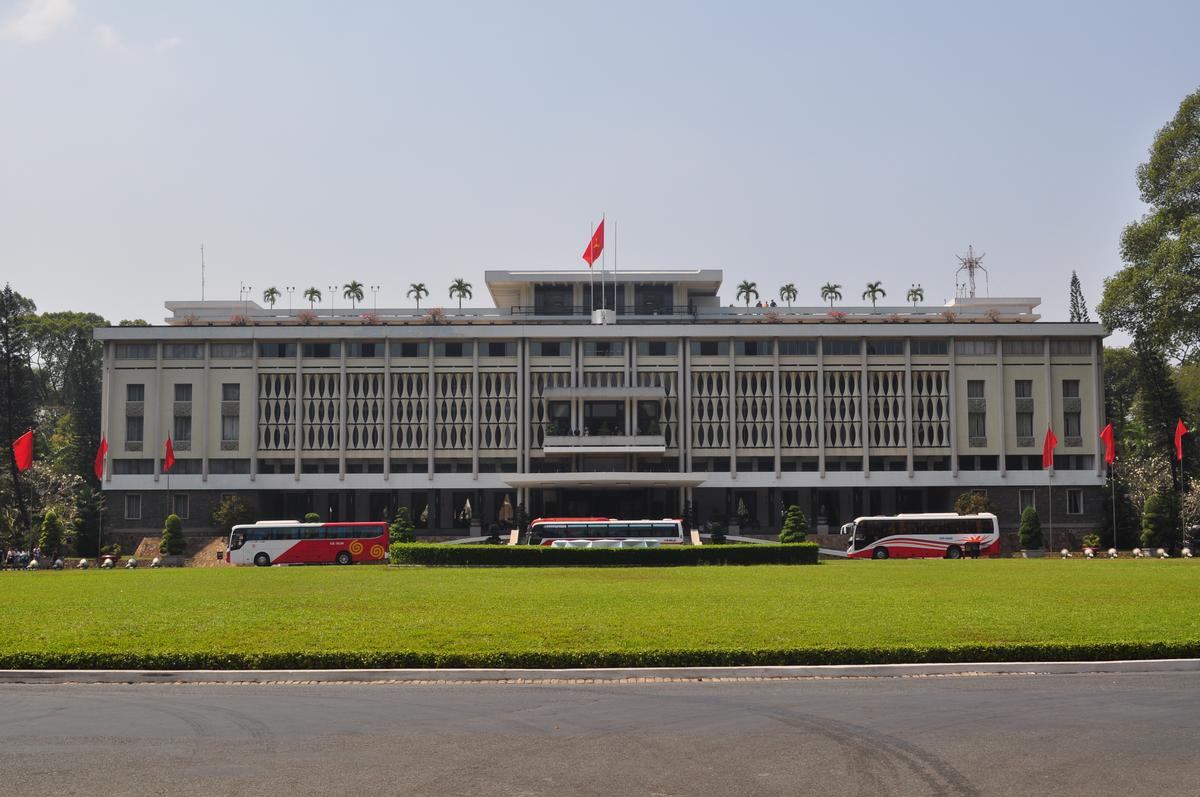 Re-unification palace is located at the heart of Ho Chi Minh City and was originally built in 1869 by the French colonists. Before the Vietnam War, it functioned as the Governor’s Mansion of France. During the Vietnam War, the palace was damaged and the building was rebuilt and expanded in 1962. In 1974, Ho Chi Minh City gained its independence from the French government and the palace’s name was changed to Independence Palace. In 1975, the name was changed to Reunification Palace to commemorate the unification of Vietnam. The Reunification Palace in Ho Chi Minh City is a 5-storey building and now functions as a site where the Vietnamese government meetings are held and the leaders of Vietnam meet the counterparts from other countries.
Re-unification palace is located at the heart of Ho Chi Minh City and was originally built in 1869 by the French colonists. Before the Vietnam War, it functioned as the Governor’s Mansion of France. During the Vietnam War, the palace was damaged and the building was rebuilt and expanded in 1962. In 1974, Ho Chi Minh City gained its independence from the French government and the palace’s name was changed to Independence Palace. In 1975, the name was changed to Reunification Palace to commemorate the unification of Vietnam. The Reunification Palace in Ho Chi Minh City is a 5-storey building and now functions as a site where the Vietnamese government meetings are held and the leaders of Vietnam meet the counterparts from other countries. -
Notre Dame Cathedral (Ho Chi Minh City)
 Saigon Notre-Dame Basilica was constructed from 1863-1880 during the French colonial influence in Vietnam. Materials to build the cathedral were brought from France and is a symbolic reflection of Vietnam’s contemporary history. The cathedral displays distinct Neo-Romanesque features, such as the two giant bell towers (holding six bronze bells), ornate stained-glass windows, and a fascinating red brick facade. The cathedral was named after the statue of “Peaceful Notre Dame” which has been carefully placed in the middle of the towers. During the war period, the church was an important place of worship and prayer for peace and victory.
Saigon Notre-Dame Basilica was constructed from 1863-1880 during the French colonial influence in Vietnam. Materials to build the cathedral were brought from France and is a symbolic reflection of Vietnam’s contemporary history. The cathedral displays distinct Neo-Romanesque features, such as the two giant bell towers (holding six bronze bells), ornate stained-glass windows, and a fascinating red brick facade. The cathedral was named after the statue of “Peaceful Notre Dame” which has been carefully placed in the middle of the towers. During the war period, the church was an important place of worship and prayer for peace and victory. -
Central Post Office (Ho Chi Minh City)
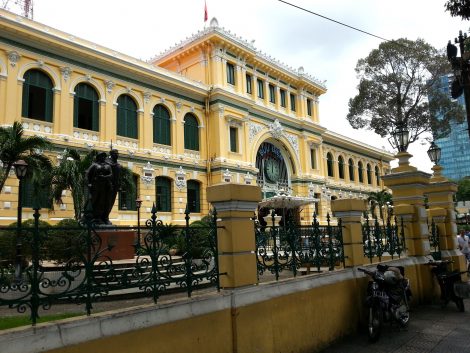 The Central Post Office is a strikingly beautiful resemblance of a mixture of Gothic, Renaissance and French influences and is dominated by classic colonial French features. Designed by Gustave Eiffel in the 19th Century, many visit the post office both for the operational purpose of posting items and to admire the remarkable architecture. The marble floors and antique phone booths, vaulted roof and arched windows can easily transport you back to the early European days. Vietnamese presence is also very apparent within the post office with wall painting depicting a map of Saigon region in 1892 and a another displaying telegraph lines that crossed over Vietnam and Cambodia.
The Central Post Office is a strikingly beautiful resemblance of a mixture of Gothic, Renaissance and French influences and is dominated by classic colonial French features. Designed by Gustave Eiffel in the 19th Century, many visit the post office both for the operational purpose of posting items and to admire the remarkable architecture. The marble floors and antique phone booths, vaulted roof and arched windows can easily transport you back to the early European days. Vietnamese presence is also very apparent within the post office with wall painting depicting a map of Saigon region in 1892 and a another displaying telegraph lines that crossed over Vietnam and Cambodia. -
Saigon Opera House (Ho Chi Minh City)
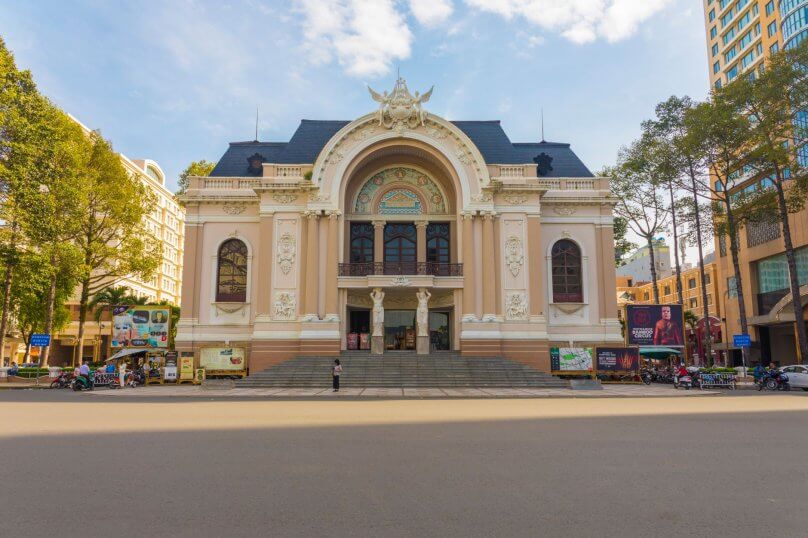 Saigon Opera House is an elegant colonial building that was built in 1897 by French architect Eugene Ferret. It is also known as the Municipality theatre and in 1955 it was transformed into South Vietnam’s Assembly House and has undergone several refurbishments. It is a popular attraction in Ho Chi Minh City and draws many to the site to admire the polished pearl exterior for amazing photo opportunities, especially during sunset when the opera house is bathed in a soft, orange light.
Saigon Opera House is an elegant colonial building that was built in 1897 by French architect Eugene Ferret. It is also known as the Municipality theatre and in 1955 it was transformed into South Vietnam’s Assembly House and has undergone several refurbishments. It is a popular attraction in Ho Chi Minh City and draws many to the site to admire the polished pearl exterior for amazing photo opportunities, especially during sunset when the opera house is bathed in a soft, orange light. -
Ben Thanh Market (Ho Chi Minh City)
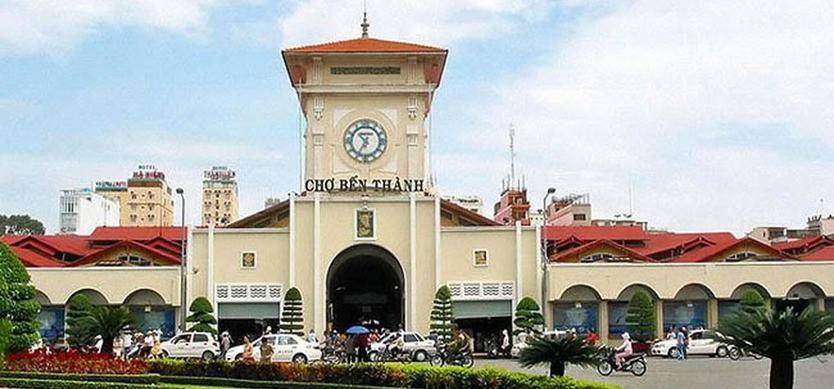 This is an ideal place to buy local handicrafts, Vietnamese art and souvenirs. You can also get a taste of “stall-style” street food Vietnamese cuisine. Market was originally situated along the Ben Nghe River, near Gia Dinh Citadel and was famously named after the Ben Nghe River. In 1911, the French colonial government decided to relocate the market to a new location. The new market’s construction lasted from 1912 - 1914. It is now located at the intersection of Le Loi, Ham Nghi, Tan Hung, and Le Lai streets and accessible through 4 gates.
This is an ideal place to buy local handicrafts, Vietnamese art and souvenirs. You can also get a taste of “stall-style” street food Vietnamese cuisine. Market was originally situated along the Ben Nghe River, near Gia Dinh Citadel and was famously named after the Ben Nghe River. In 1911, the French colonial government decided to relocate the market to a new location. The new market’s construction lasted from 1912 - 1914. It is now located at the intersection of Le Loi, Ham Nghi, Tan Hung, and Le Lai streets and accessible through 4 gates. -
Cu Chi Tunnels (1.5 hrs From Ho Chi Minh City)
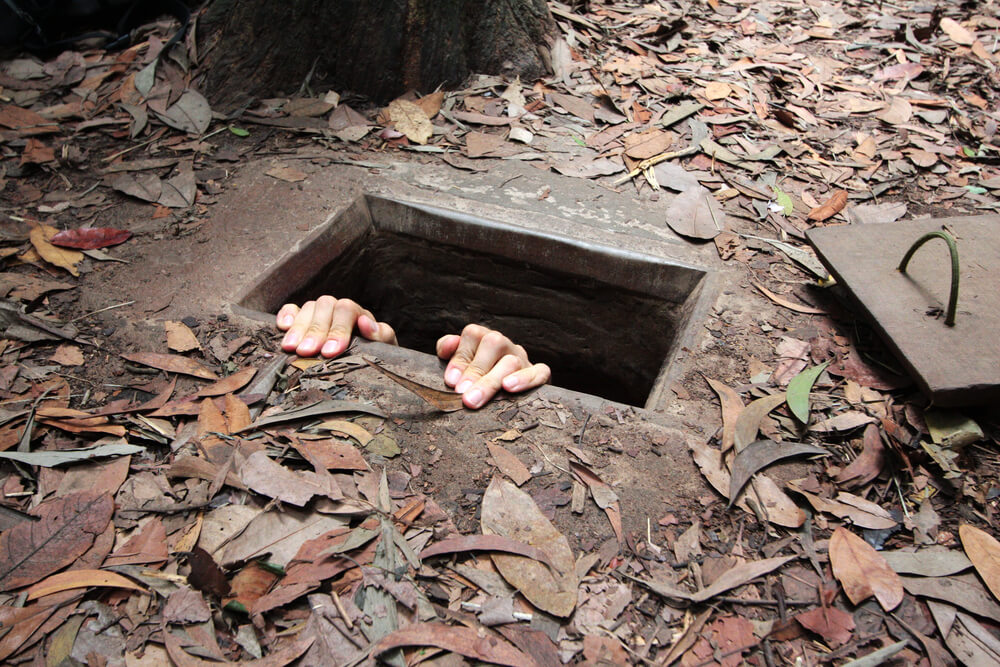 Located about 60 kilometers to the northeast of Ho Chi Minh City, it is an elaborately planned labyrinth of tiny underground tunnels that stretch all the way to the Cambodian border. The Cu Chi Tunnels network was built within 25 years from 1948 during the war against the French. It served as a means of communication between villages and played a vital role during Vietnam’s long war for independence. There were hospitals, schools, theatres, kitchens, all built into this extraordinary tunnel network, to support the fighters who spent many tough years hiding inside. The entrances to these tunnels were covered with a secret wooden door and camouflaged leaves above. Its size is so small that only the Vietnamese could fit in.
Located about 60 kilometers to the northeast of Ho Chi Minh City, it is an elaborately planned labyrinth of tiny underground tunnels that stretch all the way to the Cambodian border. The Cu Chi Tunnels network was built within 25 years from 1948 during the war against the French. It served as a means of communication between villages and played a vital role during Vietnam’s long war for independence. There were hospitals, schools, theatres, kitchens, all built into this extraordinary tunnel network, to support the fighters who spent many tough years hiding inside. The entrances to these tunnels were covered with a secret wooden door and camouflaged leaves above. Its size is so small that only the Vietnamese could fit in. -
Mekong Delta Tour
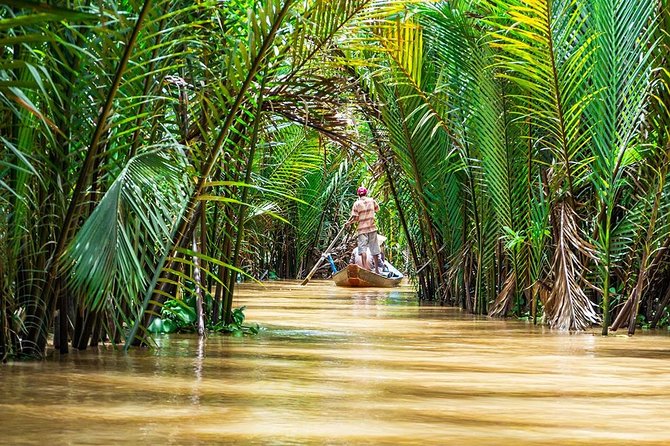 Mekong Delta is a vast region, divided into 12 provinces and is located in South-West of Vietnam (bordering Ho Chi Minh City and Cambodia). This remarkable river travels from the Himalayas, passing through China, Myanmar, Thailand and Cambodia, before reaching Vietnam. The Mekong Delta places a vital role in Vietnam’s economy as more than half of Vietnam’s rice and fish is produced in the Delta region. It is also called as the “Rice Bowl” of Vietnam.
Mekong Delta is a vast region, divided into 12 provinces and is located in South-West of Vietnam (bordering Ho Chi Minh City and Cambodia). This remarkable river travels from the Himalayas, passing through China, Myanmar, Thailand and Cambodia, before reaching Vietnam. The Mekong Delta places a vital role in Vietnam’s economy as more than half of Vietnam’s rice and fish is produced in the Delta region. It is also called as the “Rice Bowl” of Vietnam. -
Floating Markets
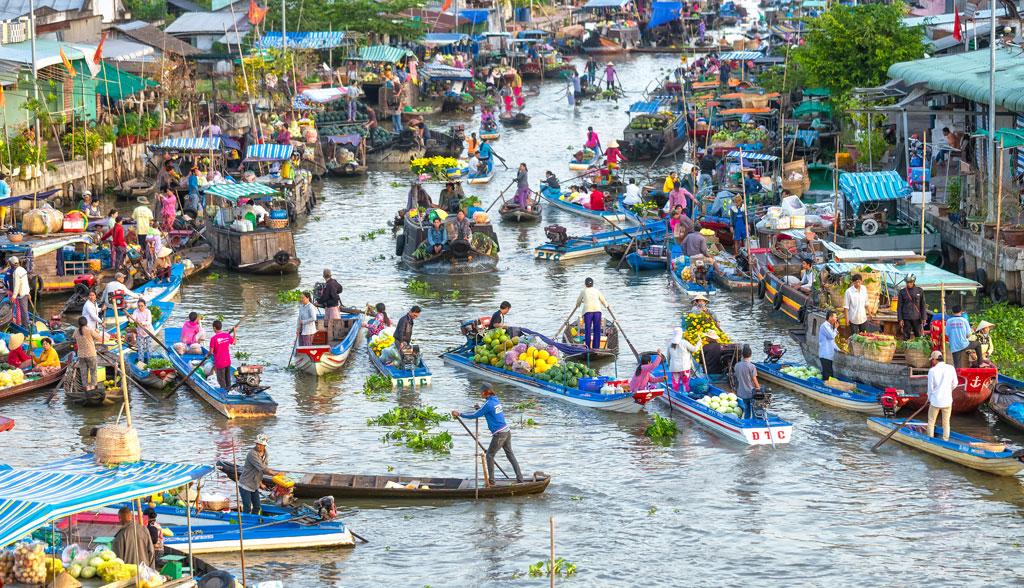 Wake up early and catch the real action on the Mekong River by heading to a floating market. Some key markets are Cai Rang, Cai Be, Phung Hiep and Phong Dien (Cai Rang and Cai Be being the biggest whereas Phong Dien is smaller in scale and consist of more traditional rowing boats as opposed to the motorised boats). These markets sell, fruits, vegetables, flowers and handicraft to wholesalers and to retail clients. It is best to visit the markets between 6am and 8am to see the full action. Some markets are open from morning to afternoon however the hustle and bustle reduces as the day goes by. Stay overnight in Mekong area if you plan to visit the early morning markets as travelling from Ho Chi Minh will take over 2 hours.
Wake up early and catch the real action on the Mekong River by heading to a floating market. Some key markets are Cai Rang, Cai Be, Phung Hiep and Phong Dien (Cai Rang and Cai Be being the biggest whereas Phong Dien is smaller in scale and consist of more traditional rowing boats as opposed to the motorised boats). These markets sell, fruits, vegetables, flowers and handicraft to wholesalers and to retail clients. It is best to visit the markets between 6am and 8am to see the full action. Some markets are open from morning to afternoon however the hustle and bustle reduces as the day goes by. Stay overnight in Mekong area if you plan to visit the early morning markets as travelling from Ho Chi Minh will take over 2 hours.
Do I need a visa?
All Australian passport holders will require a visa to enter Vietnam. There are 3 ways to apply for Vietnam visa.
Option 1: Via local Vietnam embassy or consulate
Option 2: E-Visa through government website https://evisa.xuatnhapcanh.gov.vn
Option 3: A travel agent can apply on your behalf.
We recommend the 2nd option as this is the most convenient (Unless you require multiple entries and wish to stay for more than 30 days). The processing time is roughly about 3 days for E-Visa. Visa is valid for 30 days from the date you enter the country (A single entry only)
When is the best time to visit?
Weather in Vietnam is somewhat complex due to the shape and geography of the country. In general, between March and April is probably the best time to visit if you would like to cover north, Central and south. Each area weather can be distinct based on the month you wish to travel. For travelling north, weather is best during March to April and September to November. For south, the dry season between November and April is the best. If you would like to enjoy the beach weather, then it will depend where you want to visit.
Let our friendly consultants put your mind at ease and guide you through to design an itinerary that matches the requirements in line with weather any many other facts.
How long should you spend in Vietnam?
This will depend what parts of the country you intend to cover. If you would like to visit north, central and south, we recommend between 17 to 20 days, so you can travel at a leisure pace. If you only intend to cover the north and central, between 10 to 12 days would be sufficient enough. All our tours are tailor made to suit your requirements hence we can build an itinerary considering your budget, places you wish to visit and length of your intended stay.
Is Vietnam a good country to travel with children?
Vietnam is without a doubt a great place to travel with children. It is a country that caters for the entire family to have a wonderful cultural experience. Ha Long Bay, Nihn Binh. Mai Chau, Hoi An are some great places where children will fall in love with. If you are wanting a relaxing time by the beach, there are plenty of places to choose from. When travelling with children, if you are limited with time, it’s best to cover a few key places of interest to avoid many domestic flights and long days of driving. Speak to our friendly consultants who can put your mind at ease and design a holiday for the entire family to enjoy.
What are the common airlines that flies to Vietnam from Australia?
Firstly, it is best to decide which key city you plan to fly into and fly out of Vietnam. Also, it will depend on which city you will fly from Australia.
Fly direct to Ho Chi Minh city
If you are wanting to catch a direct flight from Australia to Ho Chi Minh City, there are 2 options from Sydney and Melbourne. Both Jetstar and Vietnam airlines have direct flights from Sydney and Melbourne to Ho Chi Minh City.
Fly direct to Hanoi
There are no direct flights to Hanoi from Australia. You will need to transit either in Ho Chi Minh city OR in another overseas destination (e.g. Singapore, Bangkok etc).
Below are some good options to fly to Hanoi with a transit
Jetstar with a transit in Ho Chi Minh City, Vietnam Airlines with a transit in Ho Chi Minh City, Singapore Airlines with a transit in Singapore, Thai airways with a transit in Bangkok, Malaysian airlines with a transit in KL, Cathay Pacific with a transit in Hong Kong.
As per most of our itineraries on the website, you will arrive in Hanoi and departure from Ho Chi Minh City. We suggest Singapore Airlines as one of the best options to fly into Hanoi and fly out from Ho Chi Minh city with a transit in Singapore.
Depending on your itinerary and requirements, we will advise you of the best option/s for flights.
Hire of an air conditioned vehicle including fuel and the service of an English speaking private driver guide throughout the tour.
What is the electricity voltage?
Vietnam operates on power 110v/220v (2 different voltages are being used) and 50hz . Please check what voltages your appliance operates else you may need to get a voltage converter (If the appliance has INPUT: 100-240V, 50/60 Hz, this can be used without a voltage converter). There are 3 plug types.
 Accredited.
Accredited.
